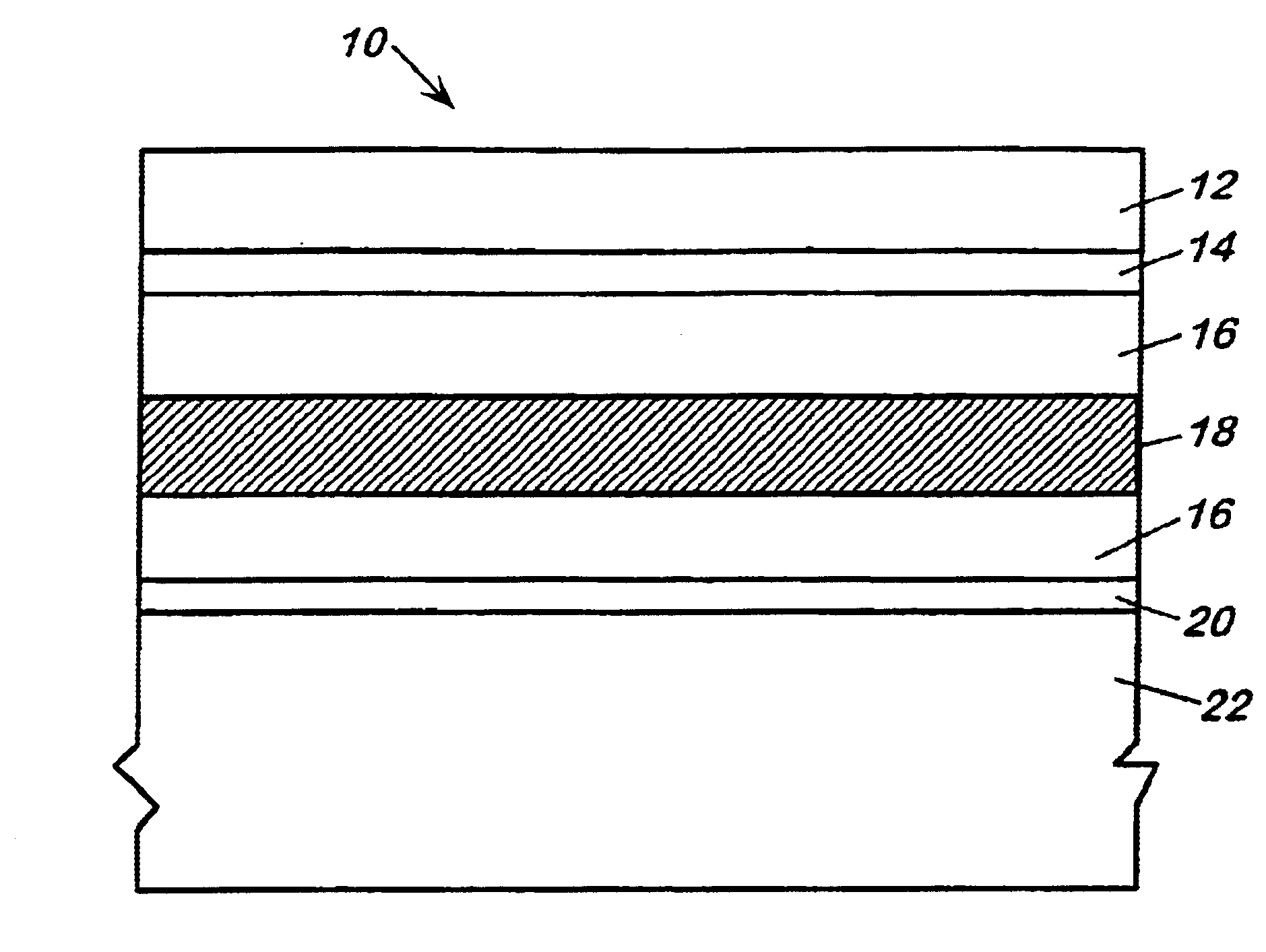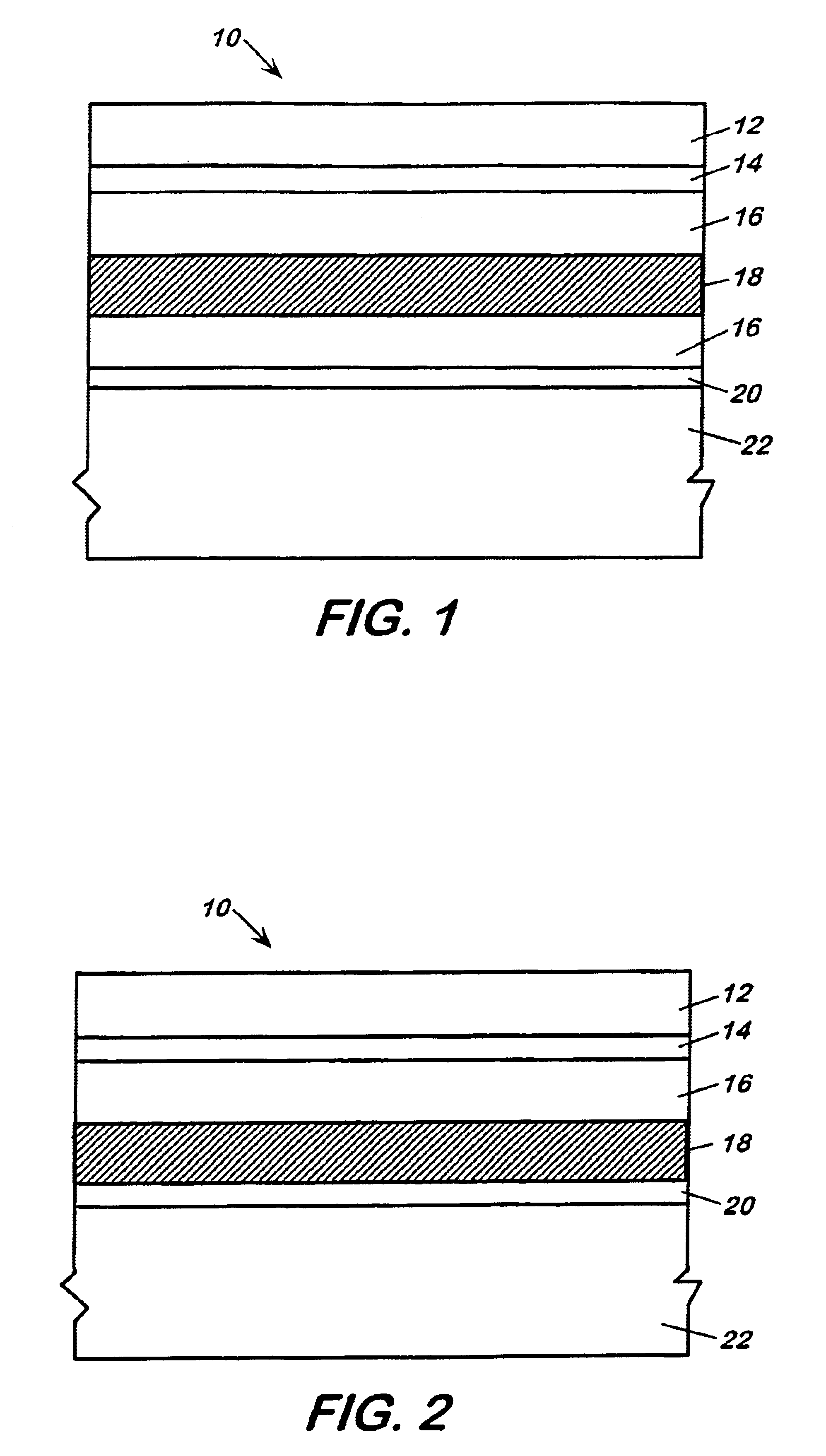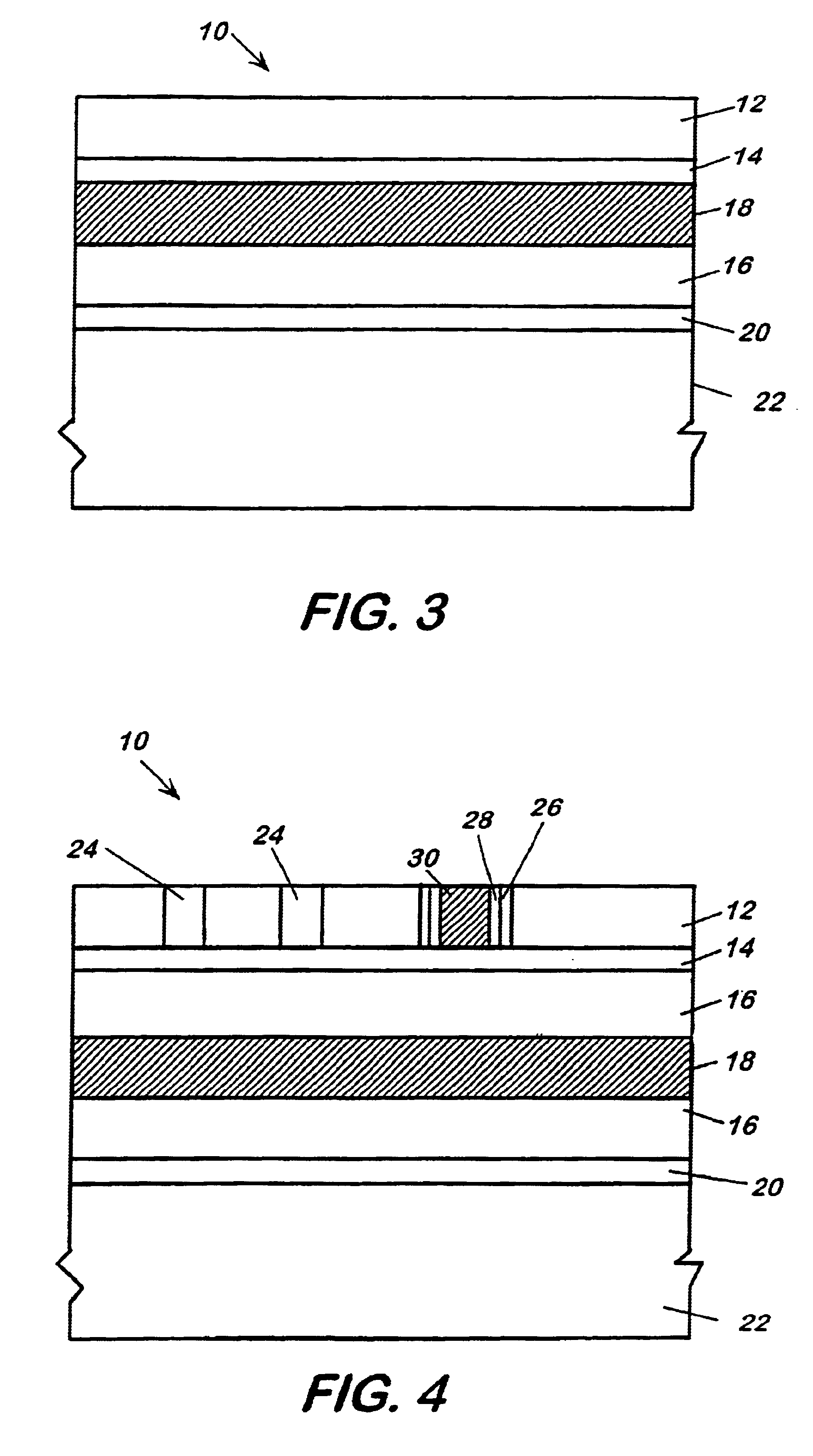Semiconductor substrate incorporating a neutron conversion layer
a technology of a semiconductor substrate and a neutron conversion layer, which is applied in the direction of semiconductor devices, semiconductor devices, electrical instruments, etc., can solve the problems of helium-3 filled tubes, requiring careful handling, and not being well suited to field operations requiring compact and highly sensitive devices, so as to improve device sensitivity
- Summary
- Abstract
- Description
- Claims
- Application Information
AI Technical Summary
Benefits of technology
Problems solved by technology
Method used
Image
Examples
Embodiment Construction
This application hereby incorporates by reference the application entitled “Neutron Detection Device and Method of Manufacture”, assigned NC 84,355, filed on date even herewith. FIG. 1 illustrates a neutron sensitive SOI substrate 10 in accordance with a preferred embodiment of the invention. As shown in FIG. 1, the neutron sensitive SOI substrate 10 includes an active semiconductor (silicon) device layer 12, a top barrier layer 14, an insulating layer 16, a neutron conversion layer 18, a bottom barrier layer 20 and a base (silicon) substrate 22. As will be readily understood with reference to conventional SOI architecture, electronic circuits and circuit elements (including memory cells) are formed in the active semiconductor device layer 12, which may generally range from 10 to 1000 nm in thickness. The insulating layer 16, for example silicon dioxide, constitutes a buried oxide (BOX) that electrically isolates the active semiconductor layer 12 from the base silicon substrate 22. ...
PUM
 Login to View More
Login to View More Abstract
Description
Claims
Application Information
 Login to View More
Login to View More - R&D
- Intellectual Property
- Life Sciences
- Materials
- Tech Scout
- Unparalleled Data Quality
- Higher Quality Content
- 60% Fewer Hallucinations
Browse by: Latest US Patents, China's latest patents, Technical Efficacy Thesaurus, Application Domain, Technology Topic, Popular Technical Reports.
© 2025 PatSnap. All rights reserved.Legal|Privacy policy|Modern Slavery Act Transparency Statement|Sitemap|About US| Contact US: help@patsnap.com



